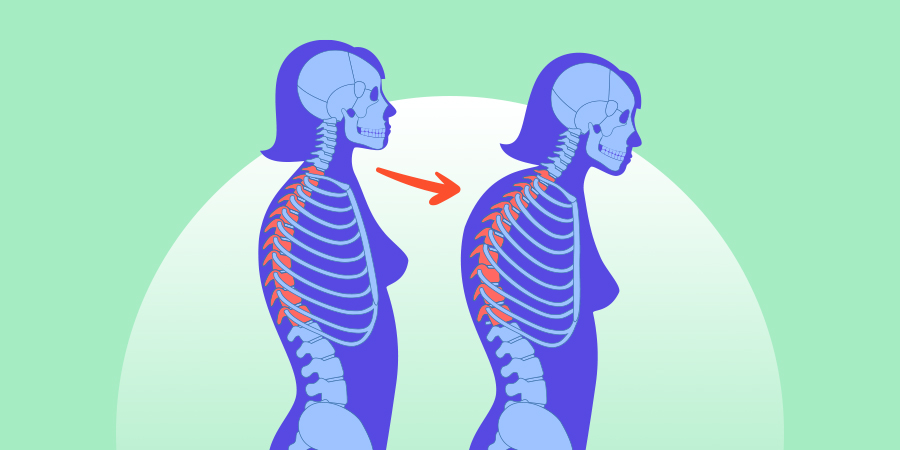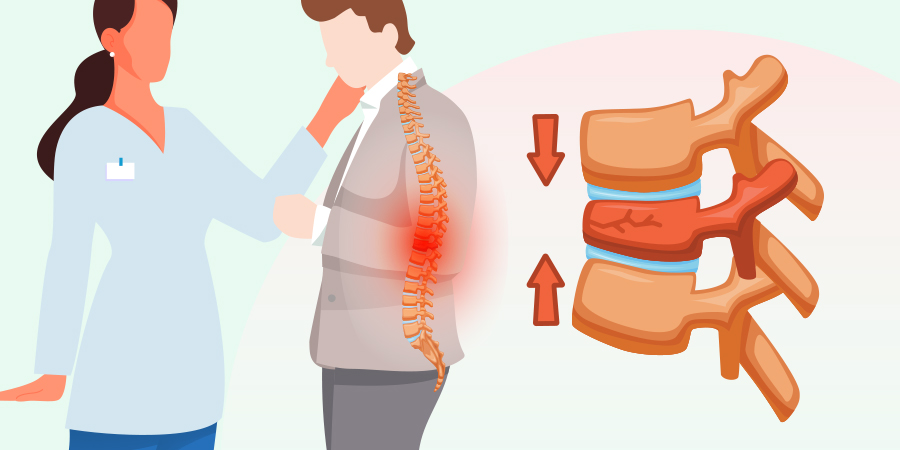Compression fractures in the spine are a common issue, affecting many individuals and often leading to chronic pain and decreased quality of life.
Understanding the treatment options available for these fractures is crucial for proper management and recovery.

In this blog post, we will delve into the various treatment modalities for compression fractures in the spine, with a special emphasis on Tulsa, Oklahoma.
Diagnosing Compression Fractures
Diagnosing compression fractures in the spine is a crucial step in providing appropriate treatment and management for individuals experiencing this condition.
A thorough diagnostic process helps healthcare providers understand the extent of the fracture, any associated complications, and guides the development of a personalized treatment plan.

Let’s delve deeper into the various methods and considerations involved in diagnosing compression fractures:
Comprehensive Medical History
Healthcare providers start by conducting a detailed patient interview to gather information about symptoms, medical history, lifestyle factors, and any recent trauma or events that could have contributed to the fracture.
Physical Examination
A physical examination is performed to assess neurological function, including reflexes, muscle strength, and sensory perception.
This evaluation helps identify any nerve damage resulting from the compression fracture.
Imaging Studies
X-rays are commonly used to visualize the spine problem and identify fractures.
They provide detailed images of the bones, allowing healthcare providers to pinpoint the location and severity of the compression fracture.
Computed tomography (CT) scans may be recommended to assess the stability of the fracture and determine if there is any risk to nearby nerves.
CT scans can provide cross-sectional images of the spine, offering more detailed information than X-rays.
Magnetic resonance imaging (MRI) is a valuable diagnostic tool that can provide detailed images of soft tissues, such as nerves and ligaments.
MRI scans are particularly useful for identifying nerve involvement and assessing the extent of damage caused by the compression fracture.
Additional Tests
In some cases, a nuclear bone scan may be ordered to determine the age of the fracture.
This test helps differentiate between recent and older fractures, providing insights into the underlying cause of the compression fracture, such as osteoporosis.
Specialist Consultation
In complex cases or when additional expertise is required, healthcare providers may refer patients to specialists, such as orthopedic surgeons or spine specialists, for further evaluation and treatment recommendations.
Consideration of Risk Factors
Given that osteoporosis is a common underlying cause of compression fractures…
Healthcare providers may evaluate bone density and assess the risk of future fractures in patients, especially postmenopausal women.
Personalized Treatment Plan
Based on the findings from the diagnostic tests and assessments, healthcare providers develop a personalized treatment plan that may include pain management strategies, bracing, minimally invasive procedures, and physical therapy to address the compression fracture effectively.
Treatment Options
Treatment options for compression fractures in the spine aim to alleviate pain, stabilize the affected vertebrae, promote healing, and improve quality of life for individuals experiencing this condition.

A multifaceted approach combining medical interventions, lifestyle modifications, and rehabilitative strategies is often employed to address compression fractures effectively.
Let’s explore in further detail the various treatment modalities available for managing compression fractures:
Pain Management
- Medications: Over-the-counter pain relievers, such as acetaminophen or nonsteroidal anti-inflammatory drugs (NSAIDs), may be recommended to alleviate pain and discomfort associated with compression fractures.
- Prescription Pain Medications: In cases of severe pain, healthcare providers may prescribe stronger pain medications to manage symptoms effectively.
Bracing
- Supportive Bracing: Wearing a brace or corset can provide support to the spine, stabilize the fractured vertebrae, and help reduce pain.
- Custom-Fitted Braces: Healthcare providers may recommend custom-fitted braces tailored to the individual’s specific needs to optimize support and comfort.
Rest and Activity Modification
- Activity Limitations: Resting and modifying daily activities to avoid movements that exacerbate pain or strain the spine can aid in pain management and support the healing process.
- Gradual Return to Activity: As the fracture heals, a gradual return to low-impact activities under the guidance of a healthcare provider or physical therapist may be recommended.
Minimally Invasive Procedures
- Vertebroplasty: This procedure involves injecting medical-grade cement into the fractured vertebra to stabilize it, reduce pain, and prevent further collapse.
- Kyphoplasty: Similar to vertebroplasty, kyphoplasty utilizes a balloon to create space in the fractured vertebra before injecting cement for stabilization.
Physical Therapy and Rehabilitation
- Exercise Programs: Tailored physical therapy exercises can help strengthen the muscles supporting the spine, improve flexibility, and enhance overall function.
- Postural Training: Physical therapists can provide guidance on maintaining proper posture and body mechanics to prevent future compression fractures and reduce strain on the spine.
Nutritional Support
- Calcium and Vitamin D Supplementation: Adequate calcium and vitamin D intake are essential for bone health and can support healing and prevent future fractures, especially in individuals with osteoporosis.
Surgical Intervention
- Surgery: In rare cases where conservative treatments are ineffective or if there are complications like spinal compression or nerve compression, surgical interventions may be considered to stabilize the spine and relieve pressure on the nerves.
Seeking Treatment in Tulsa, Oklahoma
For individuals in Tulsa, Oklahoma, seeking treatment options for compression fractures in the spine, there are specialized healthcare providers available to offer comprehensive care.

If you need treatment in Tulsa, consider reaching out to Dr. James Webb, a leading expert in the treatment and prevention of compression fractures in the spine.
Schedule an appointment with Dr. Webb for personalized care and expert guidance tailored to your needs.
Conclusion
In summary, effective treatment for compression fractures in the spine involves a combination of pain management, bracing, rest, minimally invasive procedures, and physical therapy.
By seeking timely and appropriate treatment, individuals can improve their quality of life and expedite the healing process following a compression fracture.
Remember!
If you need treatment options in Tulsa, Oklahoma for compression fractures, request an appointment with Dr. James Webb.
One of the nation’s foremost experts in treatment and prevention of compression fractures in the spine.
Stay informed, stay proactive, and prioritize your spine health for a better tomorrow.

